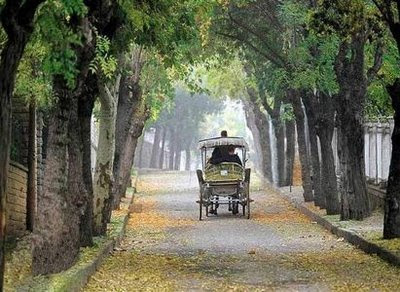On our to-do list: The Princes' Islands.
They're only ~3 miles from Istanbul's southern shores, but we hear that they feel like a different world. As opposed to the city's chaos and traffic, these nine islands (only four of which you can visit) are filled with forests, secluded coves, and bicycle paths. And we like the idea that they're relatively off the tourist radar!
We can take a boat over and explore on foot, which is appealing. The islands are car free, and supposedly it's hard to get lost because you can always follow one of the phaetons.
phaeton \ˈfā-ə-tən\
Noun
A light, open, four-wheeled horse-drawn carriage.
During the Byzantine era, princes, deposed monarchs, and other royals and public figures were exiled to the islands. However, in the second part of the 19th century--when regular steamboat service started from Istanbul--they became popular and wealthy Greeks, Armenians, and Jews started to build exquisite Victorian summer homes and settle on the islands.
Apparently, the islands still offer a glimpse of this ethnic cultural mix, although these days the Turkish character is prevailing. Luckily the majority of the fine, wooden Victorian cottages still exist, making a horse-drawn carriage or a bicycle or hiking tour sound like a nice idea.
First, a trip tomorrow back to the Grand Bazaar for our next rug. Then an upcoming trip to Ankara--the capital of Turkey (complete with an Oktoberfest party at the German embassy there). Stay tuned! xx





























